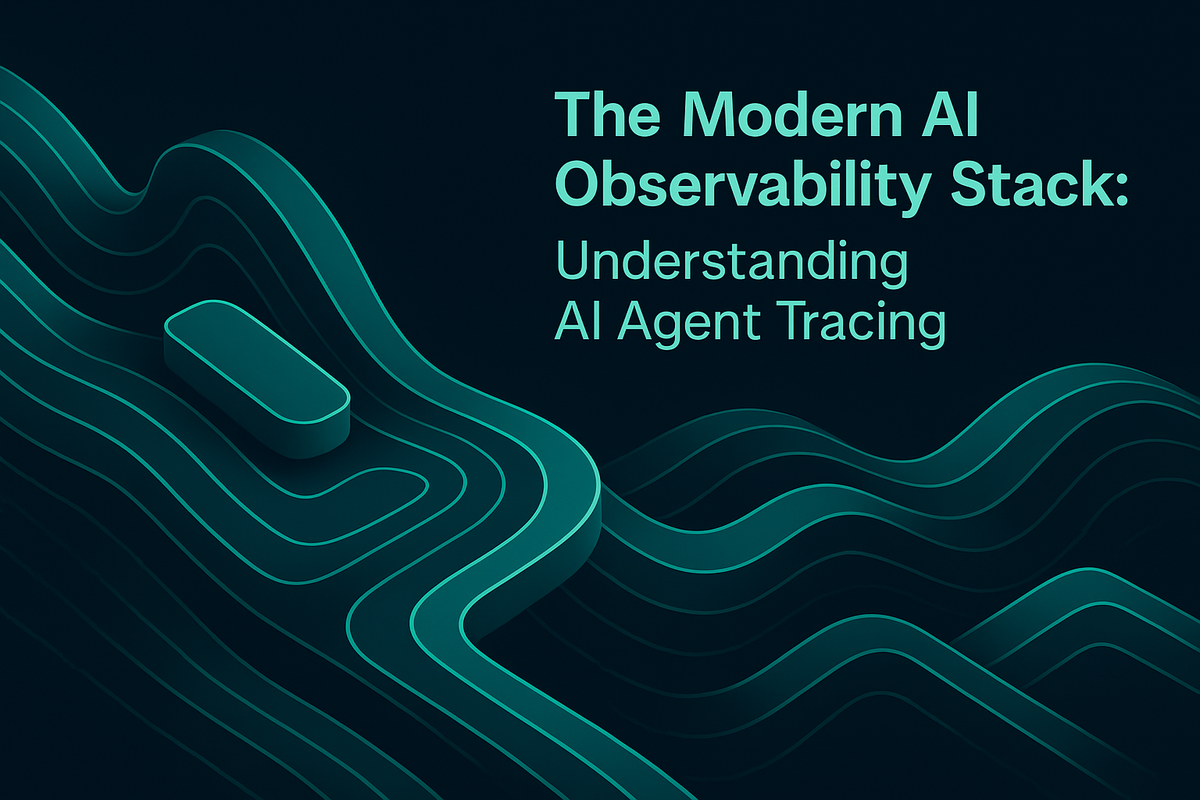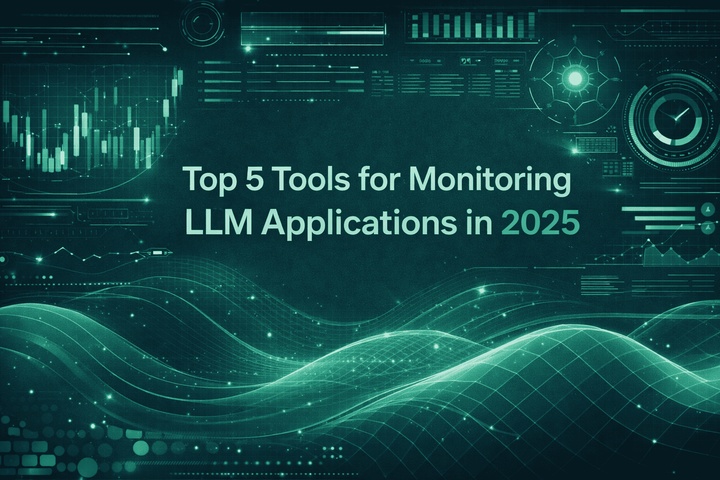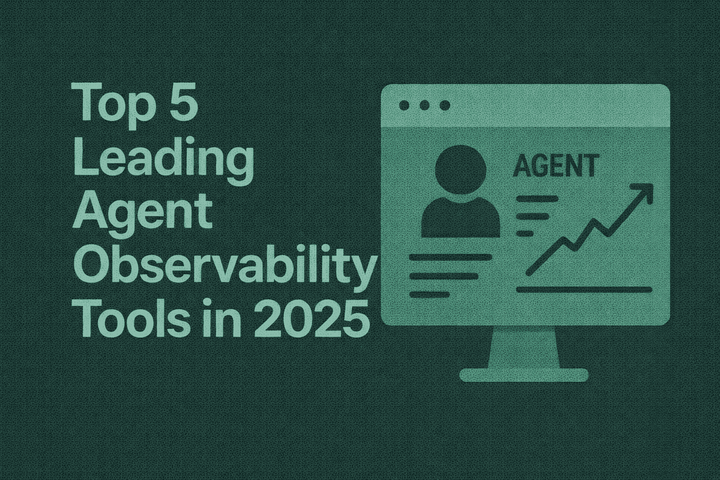The Modern AI Observability Stack: Understanding AI Agent Tracing

TL;DR
AI agent tracing has become critical for building reliable AI applications at scale. Modern observability stacks enable teams to track agent behavior across multi-step workflows, debug failures in production, and systematically improve quality. This guide explores how distributed tracing adapts to AI systems, covering trace hierarchies, span-level monitoring, and the technical foundations needed to maintain visibility into complex agent interactions.
Introduction
AI agents are fundamentally different from traditional software systems. Unlike deterministic applications that follow predictable execution paths, agents make autonomous decisions, interact with multiple tools, and process context dynamically. A customer support agent might query a knowledge base, call external APIs, and generate responses through multiple LLM calls, all within a single user interaction.
This complexity creates observability challenges that traditional monitoring tools weren't designed to handle. When an agent fails or produces poor outputs, understanding why requires visibility into every decision point, tool invocation, and context transformation throughout the execution chain. AI observability addresses these challenges by extending distributed tracing concepts specifically for AI systems.
What Is AI Agent Tracing
AI agent tracing captures the complete execution path of agent workflows as structured data. Each interaction generates a trace, a hierarchical record of all operations the agent performed, from initial input processing through final output generation.
A trace consists of nested spans, where each span represents a discrete operation within the workflow. For a RAG-based customer support agent, a single user query might generate:
- A root trace capturing the entire conversation turn
- Spans for embedding generation and vector search
- Spans for context retrieval and ranking
- Generation spans recording LLM API calls with prompts, completions, and metadata
- Tool call spans for external API interactions
This hierarchical structure preserves causal relationships between operations. When debugging why an agent provided incorrect information, engineers can inspect the retrieval span to verify which documents were fetched, then examine the generation span to see how those documents influenced the final output.
Distributed tracing for AI systems extends beyond traditional APM by capturing AI-specific metadata—prompt versions, model parameters, token counts, and confidence scores—alongside standard performance metrics.
Core Components of AI Tracing Systems
Modern AI tracing platforms implement several foundational components that work together to provide comprehensive observability.
Traces and Spans
Traces represent complete agent interactions, typically corresponding to a single user request or conversation turn. Each trace contains one or more spans arranged in a parent-child hierarchy reflecting the actual execution flow.
Spans capture operation-level details including start and end times, input and output data, status codes, and custom metadata. For AI applications, spans are typically categorized as generation spans for LLM calls, retrieval spans for vector searches, or custom spans for business logic.
Generation Tracking
Generation spans record every interaction with language models. Critical metadata includes the prompt template used, input variables, model identifier, generation parameters like temperature and max tokens, full completion text, token counts, and latency metrics.
This granular tracking enables teams to correlate output quality with specific prompt versions or model configurations. When a particular prompt version shows degraded performance in production, teams can quickly identify affected traces and understand the failure mode.
Retrieval Context
For RAG systems, retrieval spans capture which documents or data sources the agent accessed. This includes the query used for retrieval, returned documents with relevance scores, and the selected context passed to the generation step.
Tracking retrieval separately from generation helps diagnose whether issues stem from poor document retrieval or incorrect reasoning over the retrieved context. Research shows that context precision and recall are often the primary factors in RAG system quality.
Tool Call Monitoring
Agents frequently invoke external tools APIs, databases, or custom functions—to accomplish tasks. Tool call tracking records which tools were called, with what parameters, and what results they returned.
This visibility is essential for multi-step agents where tool selection and sequencing determine success. When an agent fails to complete a task, tool call logs reveal whether the agent selected appropriate tools and whether those tools executed successfully.
Session Management
Many AI applications involve multi-turn conversations that require maintaining state across interactions. Sessions group related traces together, enabling analysis of how agent behavior evolves throughout a conversation.
Session-level tracking helps identify failure patterns that only manifest after several turns, such as context window exhaustion or inconsistent responses over time.
Implementing Tracing in Production Systems
Production AI tracing requires careful instrumentation of agent workflows. Modern platforms provide SDKs that minimize the code changes needed to achieve comprehensive observability.
SDK-Based Instrumentation
Tracing SDKs offer language-specific APIs for instrumenting Python, TypeScript, Java, and Go applications. Teams instrument their code by wrapping operations in trace and span contexts, passing metadata like prompt versions and model identifiers.
For example, instrumenting a RAG pipeline involves creating a trace for the overall query, spans for embedding generation and retrieval, and a generation span for the final LLM call. The SDK handles propagation of trace context between operations and batching of telemetry data to minimize performance impact.
OpenTelemetry Integration
Many teams already use OpenTelemetry for traditional application monitoring. AI observability platforms support OpenTelemetry ingestion, allowing teams to send AI traces through existing OTLP exporters.
This approach enables unified observability where AI operations appear alongside application traces, giving teams a complete view of how AI components interact with the broader system architecture.
Attachment Support
Complex agent interactions often involve large payloads like documents, images, or intermediate data structures. Attachments allow teams to associate arbitrary files with traces without bloating the core telemetry data.
This capability proves valuable when debugging multimodal agents that process images or audio, as engineers can inspect the actual inputs the agent received.
Analyzing Agent Behavior Through Observability
Raw trace data becomes actionable through purpose-built analysis interfaces designed for AI workflows.
Trace Inspection and Debugging
Observability dashboards visualize trace hierarchies, making it easy to understand execution flow and identify failure points. Engineers can expand spans to inspect prompts, completions, and metadata, then compare successful and failed traces to identify patterns.
For agentic systems, visualizing the sequence of tool calls alongside reasoning steps helps teams understand the agent's decision-making process and spot where it deviates from expected behavior.
Quality Evaluation on Production Data
Observability enables continuous quality monitoring by running automated evaluations on logged traces. Teams configure evaluators to measure metrics like faithfulness, toxicity, or task completion on a sample of production traffic.
This approach surfaces quality regressions quickly, often before user complaints. When evaluation scores drop for a particular agent version or user segment, teams can drill into affected traces to diagnose the root cause.
Custom Analytics and Reporting
Beyond standard dashboards, teams need custom views that reflect their specific use cases. Custom dashboards and reporting capabilities let teams slice trace data by dimensions like user type, prompt version, or model provider to understand how different variables impact quality and performance.
For example, a team might track average task completion rates by agent version, enabling data-driven decisions about which versions to promote to production.
Data Curation from Production Logs
Production traces represent real user interactions, making them invaluable for building evaluation datasets and improving agent quality over time.
Dataset Generation from Traces
Exporting traces enables teams to curate datasets from production logs. Teams can filter traces by various criteria—user feedback, evaluation scores, or custom tags—to build targeted test suites.
This approach ensures evaluation datasets reflect actual usage patterns rather than synthetic test cases that may not cover edge cases users encounter in practice.
Human Annotation Workflows
Not all quality dimensions can be measured automatically. Human annotation on logs allows domain experts to review and label production traces, creating ground truth data for training custom evaluators or fine-tuning models.
These human-in-the-loop workflows close the feedback loop between production performance and continuous improvement.
Advanced Observability Patterns
Sophisticated AI systems require observability patterns that go beyond basic trace collection.
Multi-Agent Coordination
When multiple agents collaborate to accomplish tasks, tracing must capture inter-agent communication and coordination. Each agent's operations appear as separate span subtrees within the overall trace, with explicit links showing how agents exchange information.
This visibility helps teams optimize collaboration patterns and identify when agents fail to coordinate effectively.
Error Tracking and User Feedback
Error tracking captures exceptions and failures within agent workflows, associating them with the specific spans where they occurred. Combined with user feedback, this data helps teams prioritize fixes based on actual user impact.
Event Logging
Beyond structured spans, event logging captures discrete occurrences within agent workflows—guardrail violations, confidence threshold breaches, or custom business events. Events augment trace data with additional context that aids troubleshooting.
Integrating Observability with Development Workflows
Effective observability requires integration with how teams build and deploy AI applications.
Pre-Production Validation
Before deploying changes, teams run offline evaluations on test datasets. Modern platforms unify pre-production and production observability, allowing teams to compare evaluation results across environments.
This workflow reduces the risk of deploying regressions by validating changes against curated test cases before they impact users.
Continuous Integration
CI/CD integration embeds quality gates in deployment pipelines. Automated evaluations run on every commit or pull request, blocking deployments that fail to meet quality thresholds.
This approach shifts quality validation left in the development cycle, catching issues before they reach production.
Alerts and Notifications
Real-time alerting ensures teams can respond quickly to production issues. Alert configuration on evaluation scores, error rates, or latency metrics triggers notifications via Slack, PagerDuty, or other channels when thresholds are breached.
Conclusion
AI agent tracing forms the foundation of modern AI observability, providing the visibility teams need to build, deploy, and maintain reliable AI systems at scale. By capturing detailed execution data, enabling quality evaluation on production traffic, and supporting data-driven improvement cycles, observability platforms help teams ship AI applications faster while maintaining quality.
As AI systems grow more complex incorporating multiple models, tools, and reasoning steps structured observability becomes non-negotiable. Teams that invest in comprehensive tracing infrastructure gain the insights needed to debug failures quickly, optimize performance systematically, and build trust with users through reliable, high-quality AI experiences.
Ready to implement production-grade observability for your AI agents? Start with Maxim AI to trace, evaluate, and improve your AI applications with a unified platform built for modern AI engineering teams.


